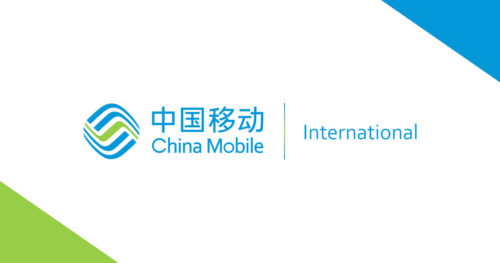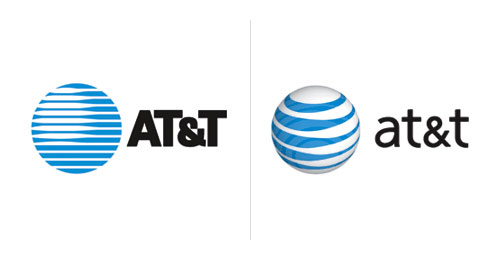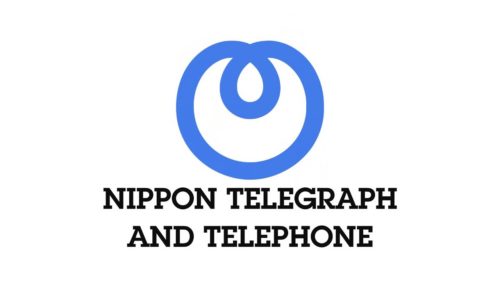
Telecommunication is the transmission of signs, signals, messages, words, writings, images and sounds or information of any nature by wire, radio, optical or other electromagnetic systems. Telecommunication occurs when the exchange of information between communication participants includes the use of technology. It is transmitted through a transmission medium, such as over physical media, for example, over electrical cable, or via electromagnetic radiation through space such as radio or light. Such transmission paths are often divided into communication channels which afford the advantages of multiplexing. Since the Latin term communicatio is considered the social process of information exchange, the term telecommunications is often used in its plural form because it involves many different technologies.
Early means of communicating over a distance included visual signals, such as beacons, smoke signals, semaphore telegraphs, signal flags and optical heliographs. Other examples of pre-modern long-distance communication included audio messages such as coded drumbeats, lung-blown horns, and loud whistles. 20th- and 21st-century technologies for long-distance communication usually involve electrical and electromagnetic technologies, such as telegraph, telephone, and teleprinter, networks, radio, microwave transmission, optical fiber, and communications satellites.
A revolution in wireless communication began in the first decade of the 20th century with the pioneering developments in radio communications by Guglielmo Marconi, who won the Nobel Prize in Physics in 1909, and other notable pioneering inventors and developers in the field of electrical and electronic telecommunications. These included Charles Wheatstone and Samuel Morse (inventors of the telegraph), Alexander Graham Bell (inventor of the telephone), Edwin Armstrong and Lee de Forest (inventors of radio), as well as Vladimir K. Zworykin, John Logie Baird and Philo Farnsworth (some of the inventors of television).
Top 10 Future Trends - Telecommunication Industry
Autonomous Mobile Network - Premium and Exclusive Content, Cross Industry Alliances
"The world’s first autonomous mobile network becomes commercially active"
Telecoms want to get back on the front row: in other words, less being the underlying vessel for delivering voice and data services, but more about managing and providing exclusive content. We could soon expect that Telcos would own the companies that are producing entertaining content, for example, popular TV shows, live sports games, etc.
Many of the Telecommunication companies are heavily focused on investments in high-quality broadcasting content, yet this trend comes with a cost. And the price is usually calculated in billions. Diversifying your portfolio of services is good, yet every spending should bring your company the desired outcomes, without damaging your vision and values. It appears that telecom players, who stayed focused on the telco-native infrastructure updates took the better decision as subscribers did not favor being bound to a single content provider.
Increased Global Internet Penetration
"Global internet penetration inflects to reach 90% (2019 = 50%)"
Global internet penetration stood at 50% in 2019, meaning that the majority of the population, predominantly in developing markets, is not connected to the digital economy. The number of connections is expected to rise rapidly, however, there are several significant challenges. Most of the untapped markets exist in small clusters in remote regions, hence, extending network access is not profitable for network operators, given high costs and limited potential. There are several new technologies that offer operators and equipment providers the opportunity to overcome some of these financial and infrastructure challenges.
As developed markets reach saturation, operators are keen to expand their scope to untapped markets. For telecom operators, new technologies have the potential to overcome significant cost barriers in reaching remote regions across developed and developing markets. An increase in the subscriber base will add value for telecom operators, but will put additional pressure on the infrastructure. Therefore, major players will become more involved in developing and implementing alternative network technologies, which could raise global mobile broadband penetration by approximately 6% by 2025. Due to higher operating margins per user (provided by lower network costs), overall increase in cumulative operating profits for operators is forecasted at USD8bln. Nevertheless, operators’ profits will be relatively small, since the majority of new subscribers are likely to be in low ARPU regions (USD3 to USD4) with limited adoption of value-added services, attributable to lower purchasing power.
Operators would radically lower their network costs by improving the efficiency of their networks, and their cost per megabyte of traffic, through investments in more cost-effective technologies such as software-defined and virtual networks and cloud-based technologies. At the same time, they must optimize their current revenue streams through new pricing and commercial models and develop new ones through innovation and by moving into adjacent markets. The internet has redefined the economies of scale from a customer base, and operators will need to seek a larger scale either through consolidation or by delivering directly to customers the way OTT operators do.
A number of operators have begun making moves in this direction, changing both their commercial models and how they interact with customers, while digitalizing their internal operating model to become leaner and more agile. Achieving true digital maturity, however, will require more efforts. Every telecom company must move quickly to reduce its costs and to simplify its operations and product and services portfolios.
One of the most effective ways for telecommunications operators to start an end-to-end digital transformation is to modernize how information is transmitted over networks and how networks operate. Together, SDN and NFV are fundamentally changing network operations. SVN can not only reduce networks’ capital and operating costs but also improve their flexibility and scalability. Its open-source architecture also fosters greater agility and innovation.
Autonomous Vehicles
"Autonomous vehicles take hold. 35% of annual New Car Sales are Level 4 by 2030"
The automated vehicle age is nearly upon us and it’s set to completely change our driving habits and the way we think of car ownership. What’s more, the introduction of driverless cars will have a huge impact on society, mobility and future city infrastructure, and also lead to the development of new and disruptive business models.
While large fleets of driverless cars are still at least five years away, when they arrive they will produce unprecedented amounts of data, such as car diagnostics and journey details, and will also rely on large amounts of real-time data to navigate around. This autonomous vehicle network will rely on a next-generation mobile network capable of handling these levels of data across all areas that driverless vehicles might go.
GAFA Companies might get broken
"One of the GAFA companies is broken up"
The United States Department of Justice (DoJ) has announced that it will be launching a comprehensive anti-trust review to establish whether the country’s leading technology behemoths are engaging in practices that have reduced competition, stifled innovation and in the process harming consumer interests.
The DoJ press release signalled that the probe was a response to "widespread concerns that consumers, businesses, and entrepreneurs have expressed about search, social media, and some retail services online". While the DoJ statement does not explicitly identify any specific companies, the likely targets of probe could include Facebook, Amazon, Google and Apple.
By operating as both platform and marketing their own goods and services on it, dominant platforms especially Amazon have placed themselves in direct competition with some of the businesses that depend on them, creating a potential conflict of interest that platforms can exploit to further entrench their dominance, thwart competition, and stifle innovation.
The DoJ is already working with Federal Trade Commission (FTC) in reviewing competitive practices in the tech industry, to identify potential antitrust violations. The FTC is focussed on Amazon.com and Facebook, while the DoJ leads on Apple and Alphabet. The Federal Trade Commission has slapped a $5 billion penalty on Facebook to settle a probe into the social network’s privacy and data protection lapses. Facebook admitted to sale of user data to Cambridge Analytica during the 2016 campaign.
Several commentators have called for either break-up, or strongly regulate the four corporate oligarchs, who can be collectively grouped under the acronym GAFA – short for Google, Amazon, Facebook and Apple- for monopolistic tendencies. Google is a clear monopoly, with a 92 per cent market share in internet searches. In smartphones, the Google Android operating system has a 75 per cent market share, and in browsers, Google’s Chrome has 56 per cent. Gmail’s share of email is lower at around 20-21 per cent, but that’s still 1.2 billion users – it’s like owning the whole of Africa or India. Google is the overwhelming champ in maps, too.
Augmented Reality and Virtual Reality Products for Telecom Industry
"AR eye glasses reach the mass market with a form factor from at least one global OEM"
Augmented Reality (AR) is gaining more power and popularity every day. The core purpose of AR is to empower digital visualizations on real images. Many trendy games are using it to make the user experience even more enriching and real. Face filters on Instagram, Snapchat and Facebook are some of the simplest examples of the everyday usage of AR. Augmented Reality had one of its peaks in 2016 when Niantic released Pokémon Go, which later turned into a blockbuster. We expect this trend to grow bigger in the upcoming years, thus creating a demand for more sophisticated applications. This will enlarge the provider’s devices and gadgets’ portfolios. Smartphone users will start embracing Augmented Reality more than ever. We expect the majority of AR usage to involve creating viral content through smartphone cameras.
On the other side, B2B Augmented Reality apps will significantly change the way people perform their jobs: for example, imagine an engineer being able to find a broken FO link within a bunch of cables by simply holding up a smartphone and opening a specific application. This will significantly decrease the time required to perform troubleshooting, finding problems and fixing them. The end customer will be satisfied and the whole process will be more efficient.
Telecoms will also start using Virtual Reality (VR) technologies to reinforce their customer experience. Many Telcos have been struggling in this area for quite some time now. VR-powered platforms will assist them in providing unique entertainment experiences and will help them differentiate their products and services. For example, the X telecom company could use Virtual Reality to demonstrate its new product/service to customers. This is a rather interactive way of presenting a new premium smartphone device or releasing a new game app.
5G Network:
"5G becomes the first generation in the history of mobile to have a bigger impact on enterprise than consumers"
It is expected that pioneering players in the telecommunications industry will enable 5G in-between 2018 and 2021. Chasing the G’s appears to be a good strategy as in each new wireless standard telecoms see opportunities for revenue growth. But one should not only focus on speed increase: 5G detaches the network infrastructure hardware and software, thus enabling new possibilities such as ad-insertion, cashing and high-quality content delivery.
The demanding market for mobile live streaming and broadcasting requires fast and reliable wireless connections. 5G seems promising for the live broadcasting industry since it is expected to provide a faster, more reliable, secure and agile wireless technology. 5G also promises to bring the trustworthiness, scalability, security and universal mobility across the telecommunications industry, which would boost several services, directly connected to IoT. As superior mobile broadband, 5G aims to empower massive IoT, offering the network capacity and performance in numerous applications of IoT in the most diverse contexts. In the graph below, you will find some market predictions on the future of 5G and IoT in percentages and numbers.
Telecom Companies and Cloud
"Private enterprise networks explode and become competition battleground between telcos and cloud companies"
Telcos have a reputation for extremely complex legacy infrastructure, with systems bogged down by costly on-premise data centers that are difficult to maintain. Enter the cloud, which has completely shaken these systems up and given telecommunications organizations a way to replacing legacy IT systems with new technology that is easily scalable and doesn’t require costly upkeep. Seeing the advantages of a cloud-enabled future, the telco space is quick to adopt cloud technology for different use cases. Unlike other entrenched industries that are slow to adjust, the telecommunications industry has been more actively innovative and eager to adopt this type of technology. Why? The telco industry enables the data centers that are essentially the backbone of business.
Telecom Industry getting benefited from Wearable Technology
"Health wearables become part of the solution to overpressed public health systems. Over 50% of people in high income countries aged 55+ own a connected health device prescribed by their doctor (2019 = 5%)"
Latest research report indicates that wearable devices can help mobile operators pocket more than $12 billion (€10.07 billion) in annual service revenue by the end of 2021. While wearable technology has been utilised in vertical sectors such as the military and healthcare industries for many years, ongoing advances have triggered a major resurgence of the concept, particularly among the consumer community. Key enabling technologies including low cost sensors, wireless connectivity, active materials and energy have converged to make wearable technology mainstream.
With the continued miniaturisation of enabling technologies, wearable devices have hit the mass market in a diverse variety of form factors – ranging from smartwatches and fitness trackers to smart glasses to hearables.
Driven by the ability to interconnect with key modern trends of healthcare, fitness, messaging and socialisation, the wearable technology ecosystem is attracting significant levels of interest. Companies as varied as smartphone OEMs, mobile operators, health insurers and retailers are circling the ecosystem alongside tiny startups, all vying for a stake.
In the coming months and years, wearable devices are expected to play a pivotal role in accelerating the adoption of new wireless connectivity technologies including cellular IoT standards – NB-IoT (Narrowband Internet of Things) and eMTC (Enhanced Machine-Type Communication), as well as the 5G NR (New Radio) air interface – which is expected to be used heavily in bandwidth intensive and latency.


















Leave a Reply